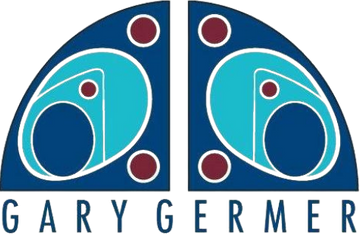John Way WEI LETANG Unframed Signed Untitled ABSTRACT Watercolor Painting
John Way aka Wei Letang (1921-2012), Untitled abstract watercolor painting on arches paper. Unframed, measures 22 1/2" x 30". Signed and dated 2005 at lower right.
This was a gift from the artist to our client in 2005 and has been in his possession ever since. It has not been framed and is in excellent/as new condition.
A great example of the artist's later abstract work in yellow and light brown. It has never been offered for sale before.
As found on Christies: FROM CALLIGRAPHY TO PAINTING
Hailing from the first generation of Chinese artists who journeyed to the United States, John Way was a pioneer of Chinese abstraction who became active in the American art scene in the 1960s. He was born in 1921 in Shanghai to a father who was a prominent collector, and in 1931 began receiving training in calligraphy from Li Zhongqian. The solid foundation in Chinese traditional culture formed the basis of his future artistic pursuits. In 1949, Way encountered Western art upon moving to Guangzhou and Hong Kong due to war. He then immigrated to the United States in 1956 and settled in Boston – a move that became an important milestone in his career. Way held his first solo exhibition of Chinese calligraphy in Shanghai at the age of 16 – a testament to his deep roots and talent in the art of traditional Chinese calligraphy, which remained an important facet in his artistic practice.
Abstraction (Lot 612) and Untitled (Lot 613) are examples of John Way's mature works from the 1990s. Reinterpreting the spirit of cursive script in Chinese calligraphy, Way's brushwork vividly demonstrates the dynamic 'gestural' nature of calligraphy, evoking a distinctly calligraphic flavor in major compositional strokes. Shuo Wen Jie Zi, a 2nd century Chinese dictionary, reads: 'Cursive script began in the Han Dynasty'. Cursive originated in the early Han Dynasty, involving a style that 'simplifies the strokes of each character, discards the rigid rules of standard script, allowing for freedom of flow and increased speed of completion'. By the Tang dynasty, cursive had evolved into a style known as 'wild cursive' or 'highly cursive script', which focused less on legibility and more on expression. In a similar manner to Way, Nam Kwan also took text as a point of departure, creating unique ideographic symbols that resonated with epistolary texts, historical relics, crowns and traditional Korean masks.
In Abstraction, Way employed different techniques within a single composition. The black brushstrokes in the painting's top, middle and bottom sections are alternatively tranquil and spirited, traversing from left to right and from top to bottom to create a powerfully dynamic layered effect recalling that of Chinese calligraphy. In Untitled, meanwhile, Way used a large brush to execute horizontal sweeps, achieving broad swathes of oil paint in differing degrees of thickness and texture. The bright red in the upper center is anchored by thick black strokes, with the juxtaposing colors and unique composition creating an idiosyncratic sense of tree-dimensional space. Such a mode of creation allows for more freedom and flexibility, opening up more artistic possibilities for the medium of oil.
By using calligraphy as a basis of his art, John Way's paintings resonate with that of Western artists such as Mark Tobey and Franz Kline, whose works in turn reflect inspirations from Chinese and Japanese calligraphy
10691-1








